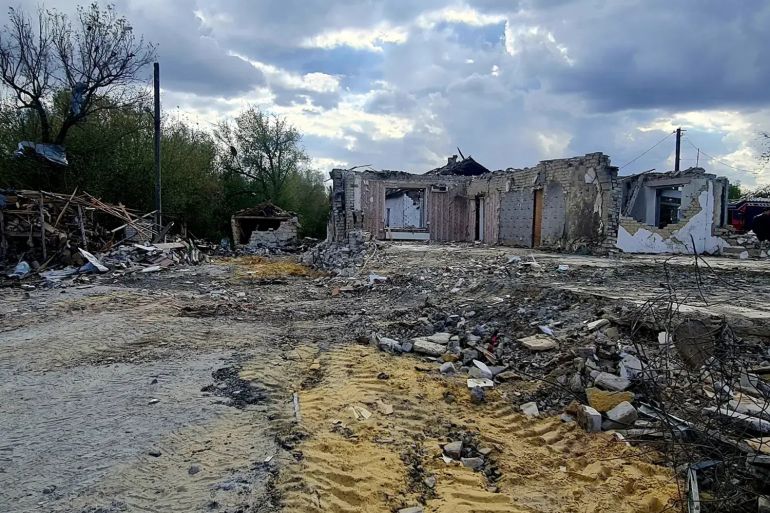Dispatches from Ukraine’s front lines: A strike devastates a village of 300
From an underground town to the start of a pre-dawn assault, an inside look at life on four front lines over four days.

Friday, October 6
Al Jazeera’s Alex Gatopoulos travelled to four front-line locations in October. This is the second of four dispatches – read his first about subterranean life in a front-line town.
It is still dark when we leave Zaporizhzhia. The pre-dawn air is cold and fresh.
Keep reading
list of 4 itemsFico shooting reveals a deeply divided country in the heart of Europe
Russia’s Putin eyes greater support from China for Ukraine war effort
Russia-Ukraine war: List of key events, day 813
We compare how we slept – sleep is always at a premium on the road. We have a long way to travel today – a good 360km (224 miles) to a village in northeastern Ukraine called Hroza, which was devastated the day before by a Russian missile strike.
More than 50 people – one-sixth of the population – were killed while attending a memorial service. Ukrainian officials said the town was hit by an Iskander missile, a precision-guided weapon with a 700kg (1,550lb) warhead. There were no obvious military targets nearby.
On our way, we first stop in the city of Kharkiv, whose centre had been struck twice this morning. We rush to set up for a live shot near a 10-metre-wide (33ft-wide) crater in the centre of an intersection. The blast shredded the facades of nearby apartment blocks. Window frames and balconies hang in tatters. A mangled Toyota truck lies on its side as the blackened shell of a van is towed away.
Unbelievably, considering the extensive damage, no one was killed.
City engineers are already there, plans for utility pipes in their hands, checking for leaks. Volunteers methodically shovel rubble, their feet crunching on shards of glass and metal fragments. A team of telecommunication workers on ladders repair phone lines. The trunks of felled trees are neatly cut up and dumped on trucks as are clumps of tarmac. This is what passes for normal in Kharkiv. It is 11am.
We head to the second blast site – a building that is all but destroyed. Clouds of dust from firefighters shovelling rubble from the upper floors obscure the ruin.
The clean-up has been swifter there. Our IDs are checked twice by police. A stall serves coffee to red-eyed emergency workers. Piles of rubble are disposed of. Alasdair, the cameraman, runs ahead to get the best footage. The police collect and carefully place parts of the missile into the van to be taken to forensics. Down the road, a long, patient queue has formed behind a truck distributing boards to shore up broken windows and doors.
Back on the road, we rush, wanting to get to Hroza to make our next live slot. As we near the village, we pass the cemetery on our left and see men digging new graves for people who were alive just yesterday.

The blast site itself is shattered although the crater has already been filled in. The surrounding lawn has dark stains from blood that has soaked into the ground. Brown bandages, an abandoned tourniquet, blue, rubber forensic gloves, smashed phones, watches and purses lie in the grass and mud.
I step away from the site for fear of treading on something sacred. It is hard to put into words – people suffered and died here, countless life-or-death dramas played out on the grass just yesterday. Dozens of people were killed here in an instant. The others died shortly after as medics fought to keep them alive. The dark stains hint at their tragic deaths.
The playground nearby has been smashed like a giant’s hand has swept it aside. A single burned insole lies in the sand. Something that looks like a body is concealed under a weighed-down tarp, guarded by a policeman.